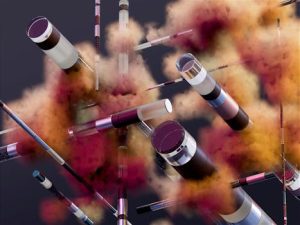Augmented Reality in Science and History Lessons
Over the years, technology has been deeply integrated into education, transforming traditional teaching methods and enhancing the learning experience for students. One of the most revolutionary developments in this field is augmented reality (AR). This technology has been gaining widespread attention for its potential to transform the way students learn, especially in subjects like science and history. In this article, we will explore the use of augmented reality in science and history lessons and how it can revolutionize the way students understand these subjects.
The Basics of Augmented Reality
Before we delve into its application in education, let’s first understand what augmented reality is. In simple terms, AR is a technology that superimposes computer-generated content onto a real-world environment. This creates an interactive and immersive experience for the user by blending the virtual with the real. Unlike virtual reality, which creates a completely digital environment, augmented reality enhances the real world by adding layers of digital information onto it.
Transforming Science Lessons with AR
Bring Complex Concepts to Life
Science can often be a challenging subject for students to grasp, with its complex concepts and abstract theories. Augmented reality can make these concepts more tangible by bringing them to life. For instance, students can use AR to visualize the human body in 3D or see the inner workings of a plant. This not only makes learning more engaging and interactive but also helps students understand and retain information better.
Hands-On Learning Experience
AR also offers a hands-on learning experience, allowing students to interact with virtual models and conduct experiments in a safe and controlled environment. For example, students can use AR to simulate scientific experiments in a chemistry lab or explore the solar system by pointing their device at the sky. This not only saves time and resources but also makes learning more exciting and memorable for students.
Exploring Natural Phenomena
AR can also help students explore natural phenomena that are difficult to observe in real life. For instance, students can use AR to witness the life cycle of a butterfly or witness a volcanic eruption. This not only ignites their curiosity but also enables them to see things they might never have been able to experience otherwise. This creates a memorable learning experience that can help students retain information for a longer period.
Revolutionizing History Lessons with AR
Bringing Historical Sites to Life
History lessons often involve reading about significant events and visiting historical sites. However, these sites may not always be accessible to students due to distance or preservation issues. AR can bridge this gap by bringing these sites to the students. With the help of AR, students can experience historical sites in a 3D model, explore their surroundings, and even interact with virtual historical figures, providing a unique and immersive learning experience.
Interactive Learning Experience
AR can also create an interactive learning experience for history lessons. For example, students can use AR to take a guided tour of a specific era, such as the Renaissance or Ancient Egypt. They can also use AR to play interactive games and solve puzzles that are related to historical events, making learning more engaging and fun.
Exploring Artifacts and Artwork
In history lessons, students often study artifacts and artwork to gain a better understanding of a particular time period. However, these pieces may not always be available for students to view in person. AR can solve this problem by providing students with a 360-degree view of these artifacts and artwork, allowing them to zoom in and explore different details. This not only enhances their learning but also allows students to appreciate these pieces of history in a whole new way.
The Future of Education
The use of augmented reality in education has opened up a whole new world of possibilities for teachers and students. It not only makes learning more engaging and interactive but also provides students with a deeper understanding of complex subjects. AR also has the potential to bridge the gap between students who have different learning styles, making education more inclusive and accessible. As technology continues to advance, augmented reality will undoubtedly play a significant role in shaping the future of education.
In conclusion, augmented reality has the power to transform science and history lessons by creating an immersive and interactive learning experience for students. It enables students to explore complex concepts, witness natural phenomena, and interact with historical events, providing a deeper understanding of these subjects. With more and more schools and educators incorporating AR into their lesson plans, we can expect to see a significant shift in the way students learn in the coming years.






